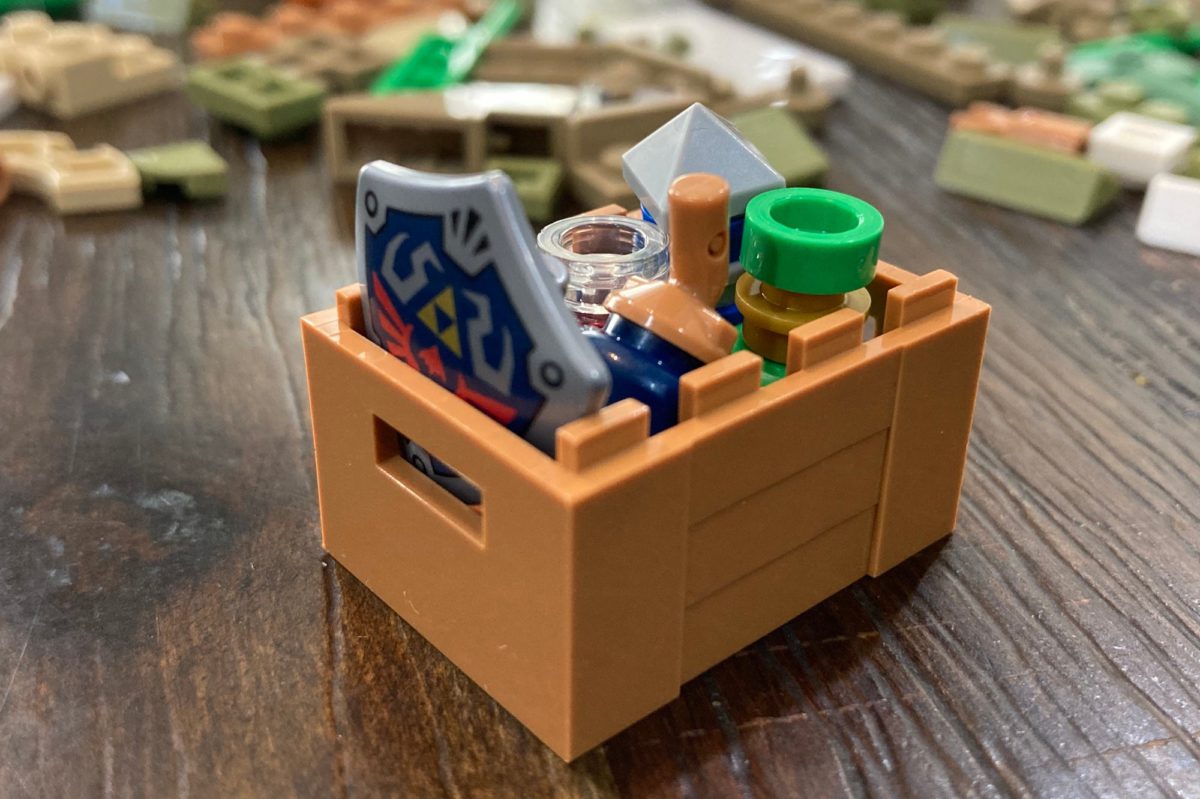At last. The LEGO Great Deku Tree, available exclusively at the LEGO Store, is the first of its kind – a Nintendo-themed set that doesn’t concern a certain turtle-stomping, mustachioed plumber. Instead, we’re transported to a medieval land ruled by prophecy, fate, and magic. For thousands of years, our heroes, Link and Zelda, have saved Hyrule from the forces of evil.
The Great Deku Tree was a key ally in four of their most acclaimed adventures: Ocarina of Time (1998), The Wind Waker (2003), Breath of the Wild (2017), and Tears of the Kingdom (2023). And accordingly, this set includes Easter eggs from across the franchise. It would appeal to any 3D Zelda fan, regardless of which series entry they grew up exploring.
The LEGO Great Deku Tree gives you two build options. In the first option, you build the Tree as it appeared in Ocarina of Time, where, in its dying moments, it summoned Link and sent him on his quest to defeat Ganon. The first boss battle, against the Queen Gohma, takes place inside the Tree.
In the second option, you build the Tree as it appeared in Breath of the Wild, standing watch over the Master Sword. This iteration of the Great Deku Tree is covered in pink leaves rather than green, and its root structure is more extensive and tangled, although its base is less solid and stout, like a swamp tree that’s evolved to survive in water. Perhaps over thousands of years, the ecosystem of the forest changed, even as the characters that inhabited it recurred.
The two builds are split into 22 bags. You cannot build both trees at the same time; there is extensive overlap, especially in the beginning and middle portions of each build, that prevent this from happening. You get a single, thick instruction book for both builds. There are no stickers in this build; all illustrations are printed directly onto the bricks themselves.
The two Great Deku Trees are not, canonically speaking, the same character; each new iteration of the Deku Tree grows from a seed and sprout of the prior one. They are all descended from one another, and thus, it is fitting that the first halves of both builds are identical. You start by laying down the forest floor and the base of the tree.
You also build two miniature builds separate from the main tree, and no matter which tree iteration you decide to go with, you will not have to ‘recycle’ them; these two miniatures will accompany the final build regardless. The first miniature is Link’s forest house from Ocarina of Time, which contains a box to store his supplies, including a hookshot, a bomb, red and blue potions, and a compass. It also comes with Navi the Fairy, which you can swap to be green, blue, or yellow, depending on whether Link is talking, searching, or fighting enemies.
The second miniature is of the pedestal in Breath of the Wild, where Link finds the Master Sword in Korok Forest. You also build Hestu (complete with his maracas) and Korok creatures that dot the forest floor.
The Great Deku Tree set comes with a total of four minifigures. You get a Breath of the Wild Link and a Breath of the Wild Zelda in their signature teal tunics, and you get two iterations of Ocarina Link – Young Link, whose tunic comes with a skirt piece around its waist, and Adult Link, who you can display with the titular Ocarina.
The minifigures come with numerous weapon accessories. In addition to the supplies in the various trunks and boxes, you have three options for swords – a short sword, the Kokiri sword, and the Master Sword – and three options for shields – the Traveler’s Shield, the Deku Shield, and the Hylian Shield with its signature crest.
After the first nine bags, you’re directed to branch off and choose either the Breath of the Wild build or the Ocarina build. If you decide to go with the former, you proceed right on to Bag 10, and you continue building up through Bag 19, in linear order. The final Breath of the Wild tree contains two remote Bomb Rune and a Sheikah Slate in hidden compartments along the tree’s base. There’s a tribute to the Riddles of Hyrule sidequest in the tree’s head. At the bottom of the tree is the Navel, which includes the General Shoppe, Spore Store, and Inn. The tree itself is rigged so that when you push down on a lever at the back, its eyebrows and mouth move. Lastly, you build four smaller trees that decorate the surrounding area.
If you decide on the Ocarina build, you take a more circuitous route to the end result. After Bag 19, you open Bags 10, 14, and 23 at the same time. Then Bag 13. Then Bag 16. Then Bags 17, 20, and 21. And then lastly, Bag 22.
The Ocarina tree comes with its own set of game-specific Easter eggs. The tree’s hidden compartments contain a fairy bow and a staff notes musical representation of “Saria’s Song.” The bottom of the tree is a dungeon, with a treasure chest that holds a Fairy Slingshot and a massive Skulltula that drops from the ceiling via a catch-and-release mechanism.
Outside, instead of additional trees, there’s a Gossip Stone and two carnivorous Deku Babas to eat Link if he gets too close. Lastly, the tree’s mouth opens into a doorway so that Link can crawl inside and explore.
If there is a drawback to this set, it’s that once you build one version of the set, you will feel hard-pressed to build the other. For the sake of this review, I managed it, but it required me to exercise foresight; I got a bunch of Zip-Loc bags and address labels to keep track of what went where.
So right now, I have the leftover pieces from Bags 10, 14, and 23 in a single bag. If I take apart the current tree, I’ll have to match up my tree with the instruction booklet’s tree to figure out what went there, and then rebag and regroup them. But even that doesn’t completely solve the problem, unless I separate everything into three piles, piece by piece. It’ll be a slow go, and that’s if I don’t lose a couple of pieces in the transition. So I probably won’t. Doing it once was enough.
If I had to choose which was the “better” build, it’s the Breath of the Wild tree. It’s more colorful and detailed, and its facial expressions are more animated. But that said, both trees are an impressive sight. And if you grew up with Ocarina of Time, then that’s the tree you’re building. Your nostalgia will make the final decision for you.
LEGO Great Deku Tree 2-in-1, Set #77092, retails for $299.99, and it is composed of 2500 pieces. It is available exclusively at the LEGO Store. For more, check out our picks for the best Nintendo LEGO sets, as well as the best Marvel LEGO sets.
Kevin Wong is a contributing freelancer for IGN, specializing in LEGO. He’s also been published in Complex, Engadget, Gamespot, Kotaku, and more. Follow him on Twitter at @kevinjameswong.













